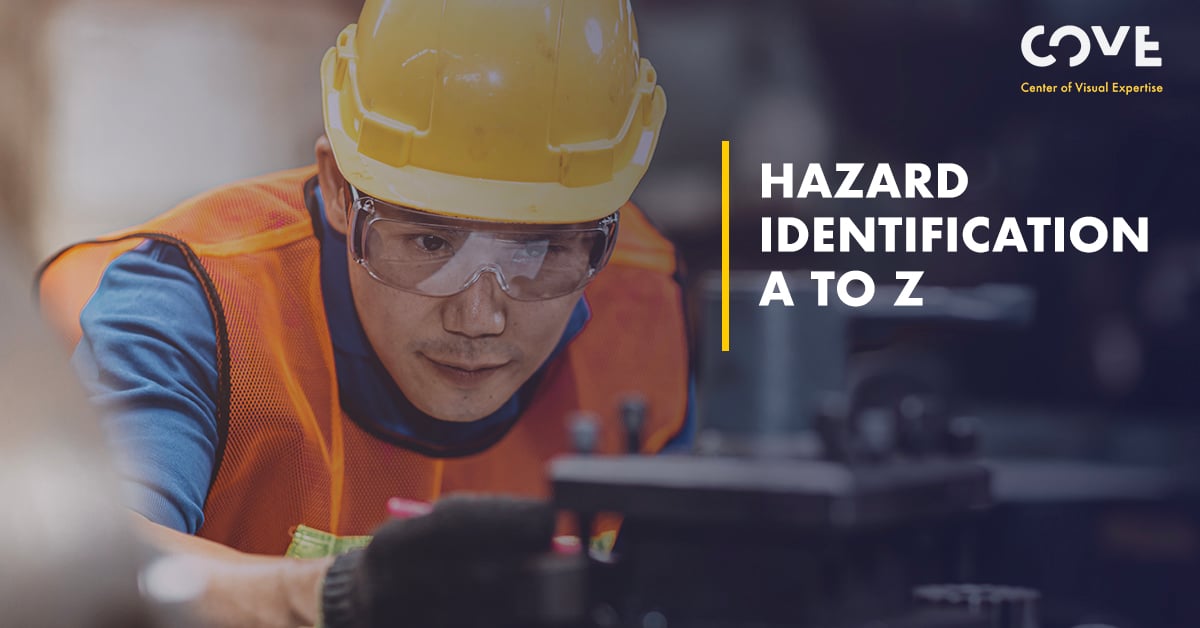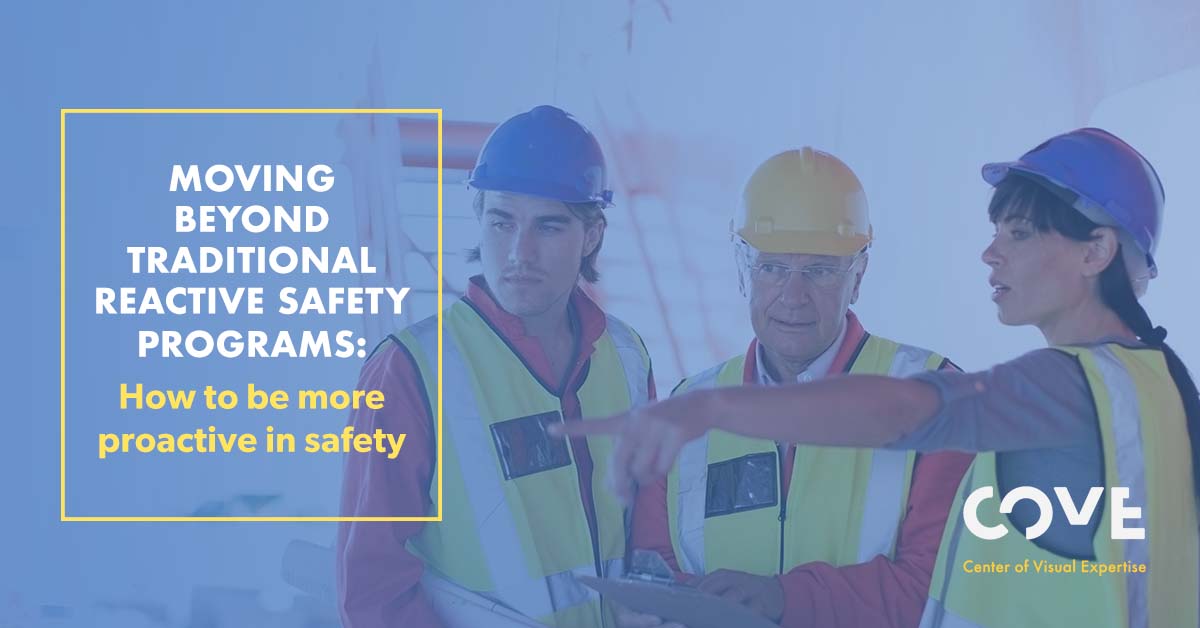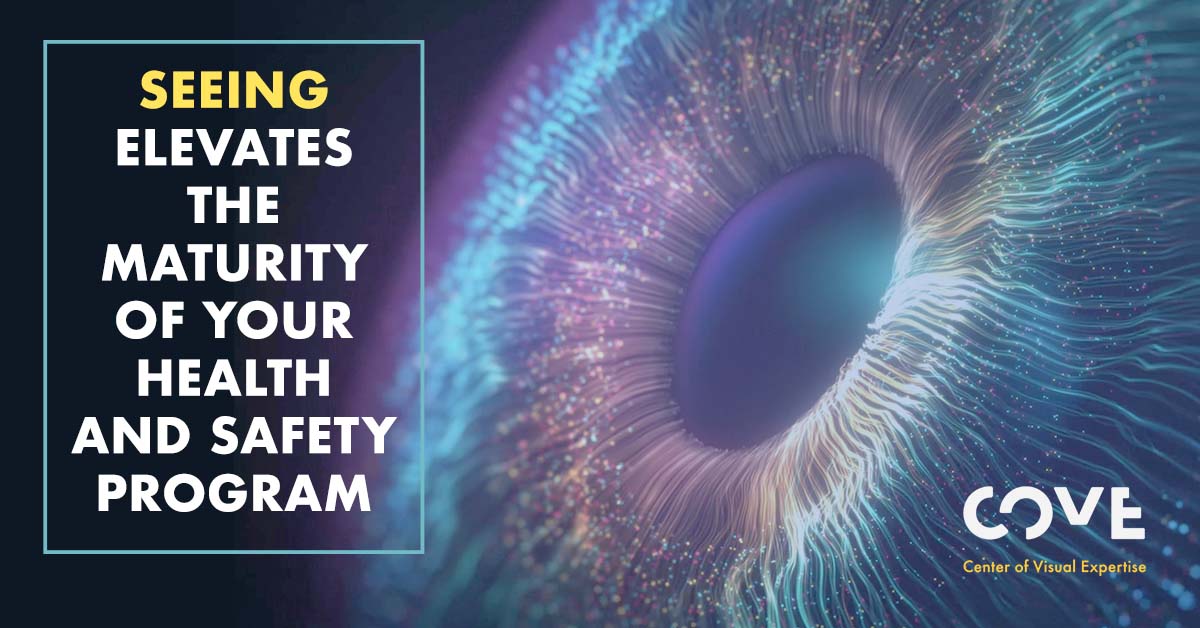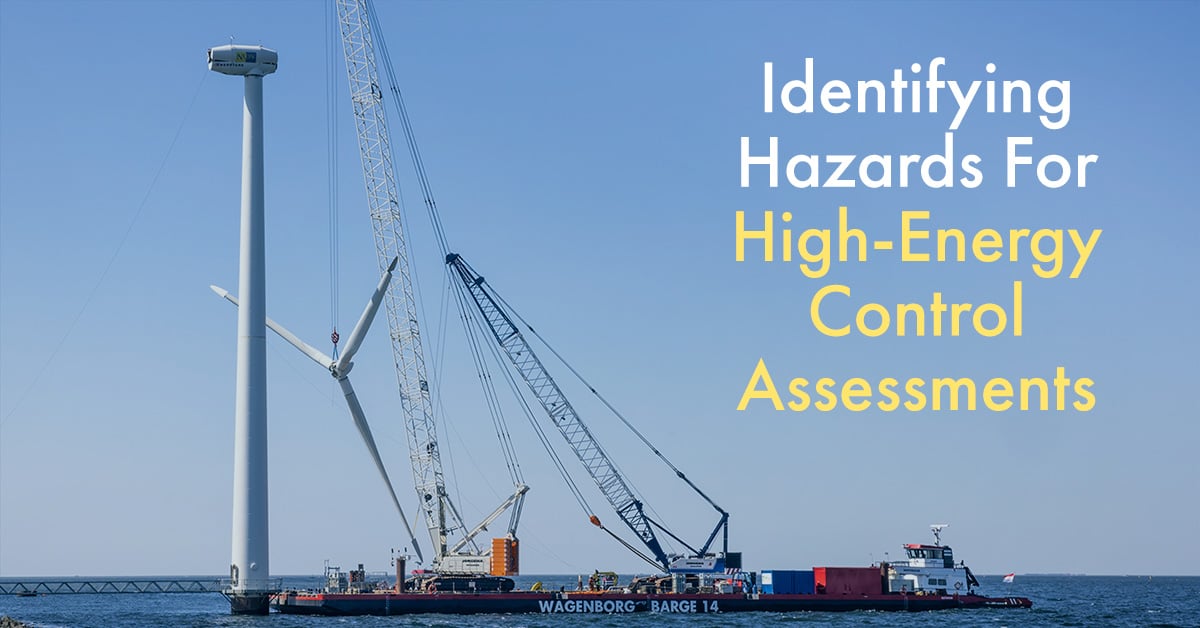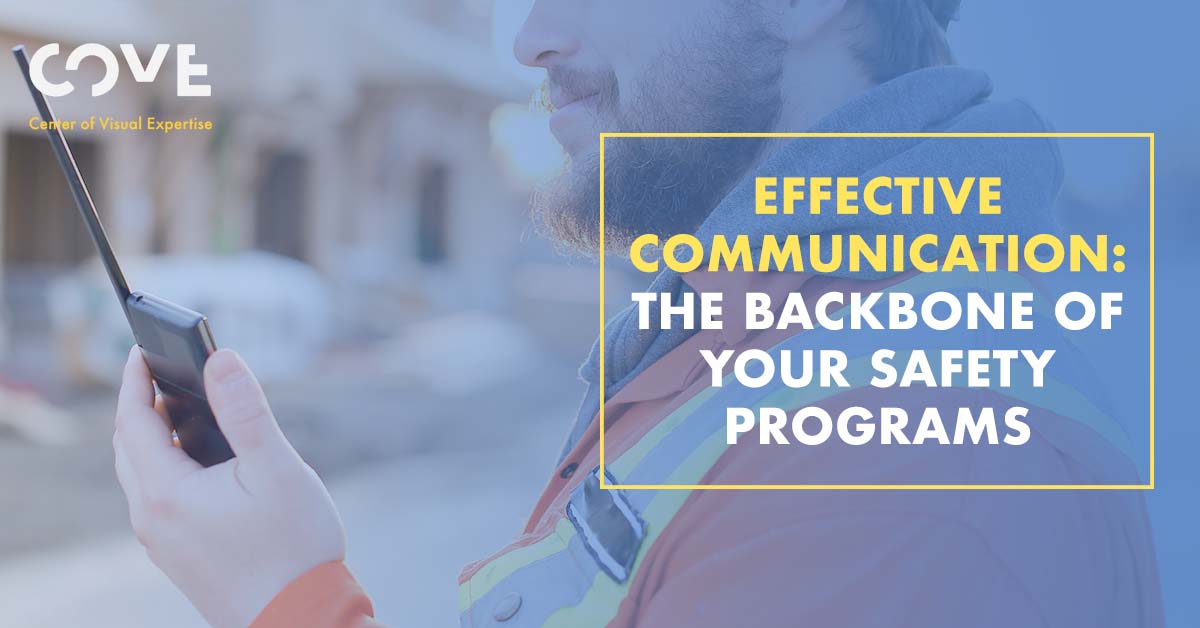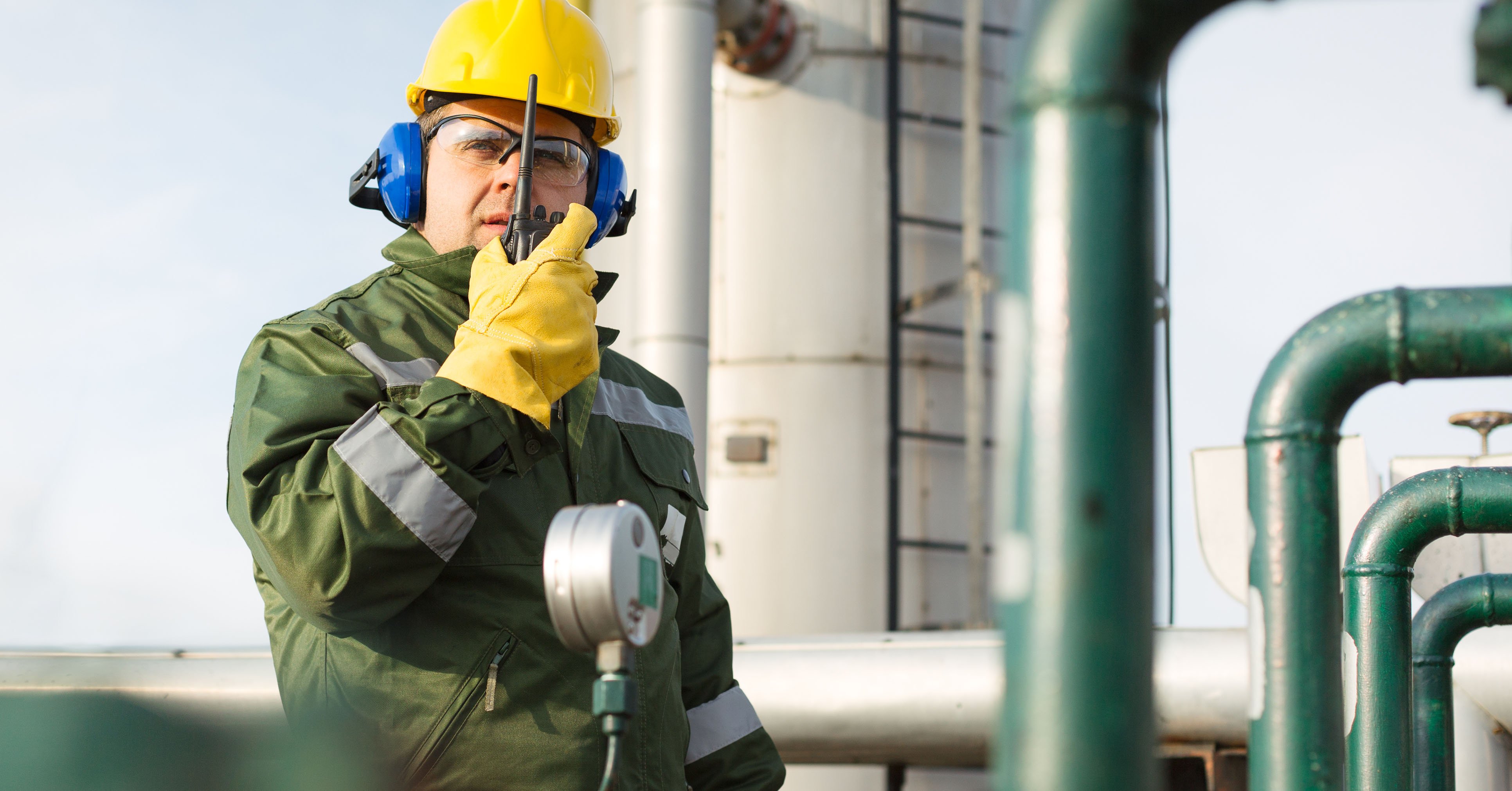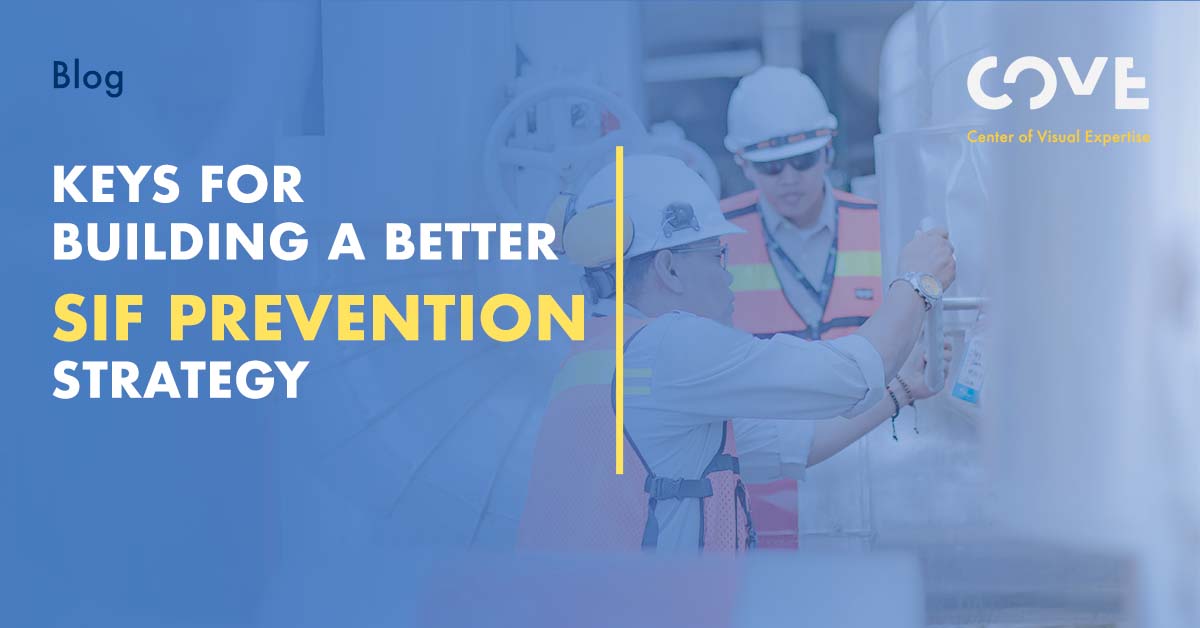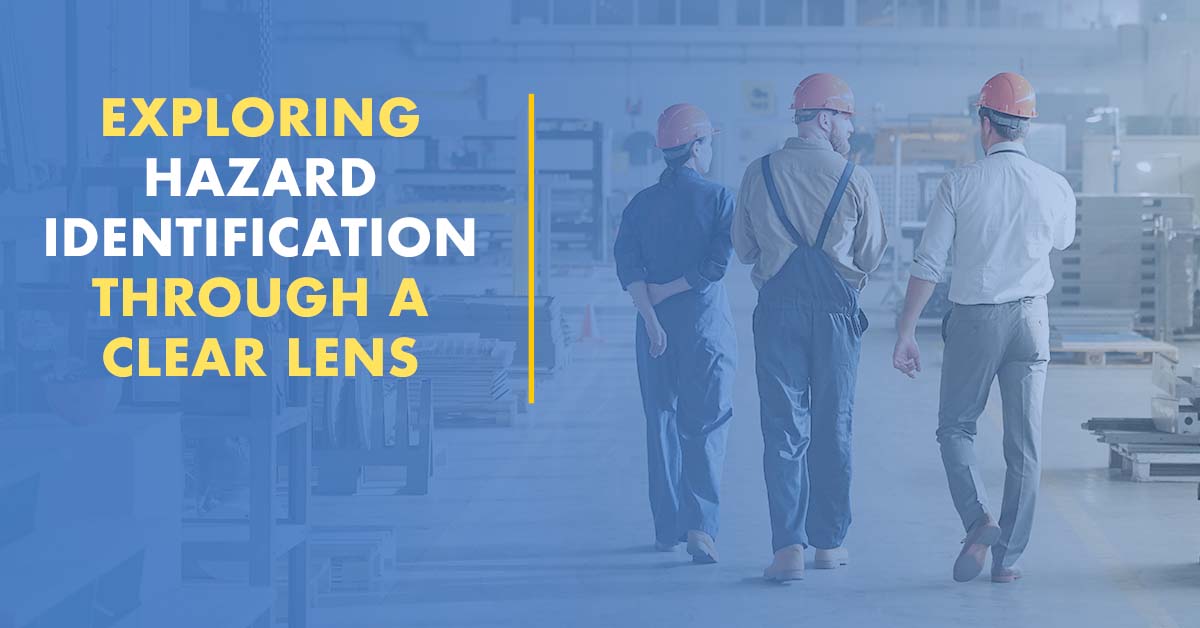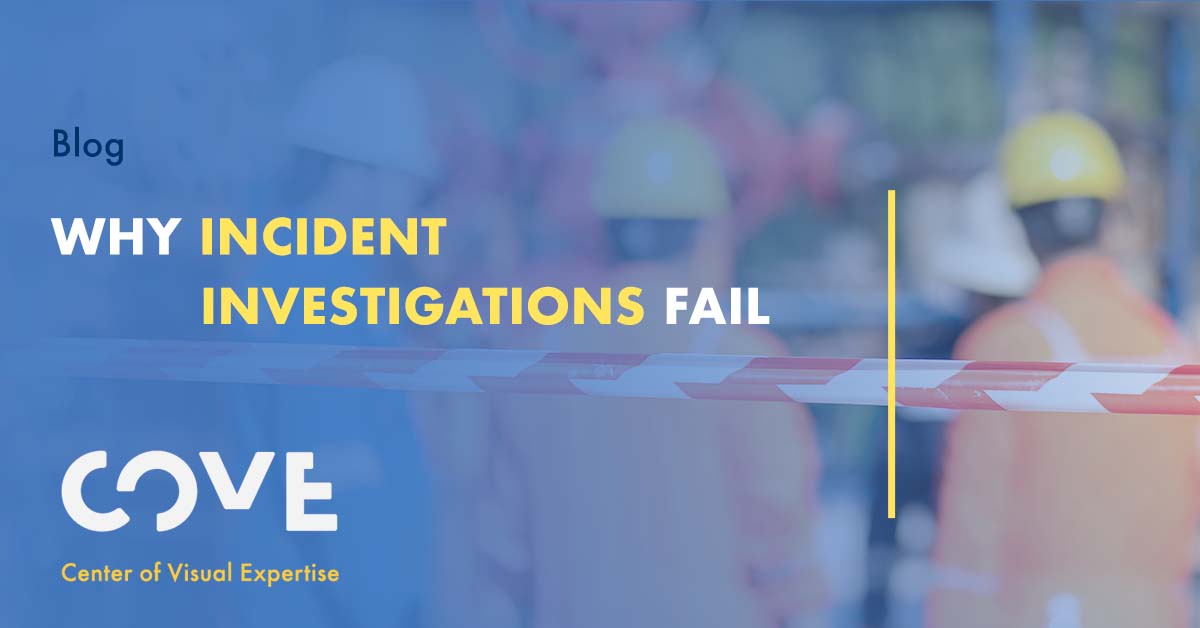By Dave Johnson on Dec 15, 2020 11:30:00 AM
Hazard identification is a practice with many techniques, challenges and opportunities. One format to capture many elements of this essential safety procedure is to compile an A-Z index. Hazard identification methodology has breadth and depth to cover every letter of the alphabet.
A – Art
Improving hazard identification can draw on aspects of art education that have been taught for decades.
B – Biases
Blinder and filters that block our ability to look, observe and see with clarity and objectivity.
C – Contrast & Color
Two Elements of Art to look for in identifying hazards in work conditions.
D – Describe
After you identify a hazard, describe it so you can assess its potential risk.
E – Elements of Art
A method for analyzing a painting, an image, and practically speaking, work conditions, in terms of color, line, shapes, space and texture. Applied to work conditions, these elements can reveal hidden hazards.
F – Fundamental
Hazard identification is fundamental to any effort to improve safety performance
G – Gaps
Gaps or failures in hazard identification can lead to near misses, incidents, serious injuries and fatalities.
H – Hazard Recognition
First you are trained to become aware of hazards existing in a task or a workplace. This can take place in a classroom Next you identify, point to, specific hazards in audits, walkthroughs and hazard hunts. Finally, you slow down to deliberate and recognize the degree of risk posed by the hazard.
I – Interpret
A critical thinking skill applied to hazard identification to give meaning to what you see. Just how dangerous is the hazard you have identified? Your interpretation must be objective, not subjective.
J – Job Hazard Analysis
Breaking down a task into individual steps, analyzed in sequence order, to identify hazards. Also known as job safety analysis. Another critical thinking skill.
K – Knowledge
90% of the information we take in is visual. This gives us intellectual knowledge. But knowledge alone is not enough if we can’t see the hazards that exist around us.
L – Lines
One of the most important Elements of Art. In one “find it, fix it” program, looking for lines generated the most hazards identified. Lines that should have been straight were not. Parts of a task or a work area were not in alignment.
M – Meaning
Identifying a hazard is the first step. You must give meaning to what you see. What degree of risk exists? Meaning emerges from the critical skills processes of description, analysis and interpretation.
N – Never
Never assume, no matter how much experience you have, that you know all the hazards in your work tasks or work surroundings.
O – Overlook
It is easy and common to overlook hazards attributable to biases, the complexity of work, and time pressures that cause us to rush and pass by hazards we’ve seen maybe a hundred times without realizing the threat they pose.
P – Pause
Slow down, even a bit --it doesn’t need to be for hours -- so you don’t simply glance around your work environment but with deliberation you look, observe and truly see so you identify hazards by Seeing the Whole PICTURE®.
Q – Quantify
Take photographs or videos as part of your hazard identification effort so you can document the inventory of hazards you have identified. Quantification of hazards identified is necessary to determine your work area or entire organization’s risk priorities and risk profile.
R – Risk Management
Visual Literacy involves a three-step risk management process. First, you identify a hazard. Next, you describe it, analyze and interpret it to give it meaning. Finally, based on your assessment you take action to manage the risk either through elimination or mitigation using the hierarchy controls: 1) elimination; 2) substitution (replace the hazard); 3) engineering controls (isolate people from the hazard); 4) administrative controls (change the way people work); and 5) personal protective equipment (protect people by giving them PPE).
S – Space & Shapes
Two Elements of Art used to deconstruct a work task or work conditions to make it easier to identify hazards. An examination of housekeeping may reveal inadequate spacing of stored items and a lack of order in how equipment, tools, storage containers, etc. are arranged. There is no orderly shape or pre planned organization to how tools and equipment are sorted, set in place, cleaned, standardized and organized for sustainable operations – the 5 Ss of lean manufacturing.
T – Texture
One of the Elements of Art used to identify hazards. Studying a task or work conditions, you may discover stair treads are worn or not in place, or worn tools have lost their grip. Slips, trips, falls and dropped objects can result.
U – Understand
Hazard identification is fundamental to understanding the context in which you work; how safe or dangerous your task or surroundings may be. There is no such understanding without first identifying hazards.
V – Visual Literacy
A methodology adopted from art education taught by the Toledo Museum of Art and used by COVE: Center of Visual Expertise to identify and eliminate or mitigate hazards.
W – Workshops
Visual Literacy is achieved through training. COVE delivers training in workshops that teach what Visual Literacy is, why it matters to us as individuals, and how the tools and techniques improve safety performance.
X – X-ray
Visual Literacy identifies and diagnoses hazards much like an X-ray reveals health illnesses and physical injuries that are unseen by the naked eye.
Y – You
What do you see? How do you perceive the hazard? What does it mean? How do you interpret the risk associated with the hazard? What are you going to do about it? How are you going to mitigate the risk?
Z – Zero Injuries
Hazard identification is one of the first steps, along with management leadership, worker engagement, training and written safety and health procedures, in the journey to zero injuries. Eliminating all injuries and fatalities is the vision that inspires worker engagement and actively caring among workers.
This A-Z index, analyzing hazard identification from various perspectives, including the innovative Visual Literacy methodology, reflects the ways that identifying hazards is a safety enabler. A pre-requisite to achieving safety performance excellence. Hazard identification also builds safety capacity. It is a core competency in the skill set necessary to make the vision of eliminating all injuries and fatalities credible and engaging.
Learn more about COVE's approach to Hazard Identification.
